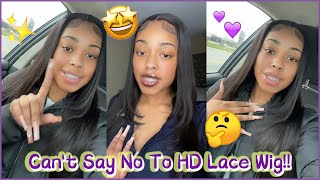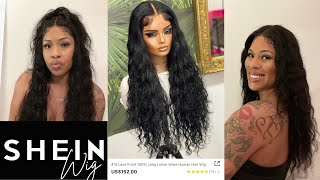A Beginner’s Guide to the World of Wigs
- Posted on 26 August, 2021
- Hair Knowledge
- By Anonymous
Welcome, a monthly column in which we dive into the dynamic, ever-changing world of wigs, its relevance in our culture, and, of course, tips on how to get all your pieces looking right. Today, we start with the basics — the vocabulary you need to, at the very least, not make a fool of yourself when you head to the beauty supply shop. Read on to find out the basics of what kind of wigs are on the market, how much they cost, and how to properly care for them.
Wigs are having a major moment in the beauty industry. They’ve been a longtime staple for event-going celebrities looking to quickly change their hairstyle for the red carpet without damaging their own hair. But beyond the world of stardom (and perhaps your aunties), wigs have been gaining major steam on social media, where skilled hairstylists showcase their magic for the masses. Every other day, it seems, a stylist goes viral for flawlessly blending a unit to the point where it looks exactly like it could be the client’s own hair.
And just as there are many different ways to style a wig, there are many different kinds of wigs to style. Frontals, full-lace wigs, synthetic units — you've got options, baby. Whether you’re a naturalista who wants to switch it up without putting stress on your strands, or you’re simply looking for a change without the commitment, wigs are an incredibly versatile and convenient option to consider.
“People don’t like to put heat on [or color] their natural hair. With these wigs, [you can] change your hairstyle frequently without ruining the integrity of your natural hair," Kellon Deryck, hairstylist and the mastermind behind Cardi B’s half-up, half-down style at Coachella, explains. "So you get this flawless look without having to press out your edges or color your hair time after time.”

Interested in trying a wig but don’t know where to start? Look no further. Ahead, with the help of Deryck and other professionals, is the full rundown of everything you need to know about wigs.
Synthetic vs. Natural
Wigs can get expensive. A good wig made of human hair can set you back anywhere between $400 and $5,000, depending on who is creating it and what type of hair they’re using. Luckily, there are well-made synthetic wigs that cost far less, sometimes under $100, though these are rare and require a lot of research. That said, synthetic wigs often last only a few months, or less if you’re rocking them regularly. But, with proper care, you can use human-hair wigs for a few years.
Types of Wigs
1) Ready-Made Wigs
These are readily available at local beauty supply stores and hair vendors. They are prestyled, often synthetic, one-size-fits-all creations that can be adjusted to the wearer’s head, and sold at a set price. For those of us with limited disposable income, they are usually budget-friendly, ranging from $20 to $400; though, in my experience, $150 is the average.
2) Lace-Front Wigs
These are typically human-hair made, with a closure (a hairpiece that looks like your natural scalp) sewn on the unit's crown that can only be parted one or two ways in the front. Afterward, tracks are sewn on the back of the unit from ear to ear. They can cost between $100 and $500.
3) Full-Lace Wigs
Usually made with human hair and constructed from a lace cap, “a full-lace wig is a ventilated unit that has versatility [and] allows you to part your hair in any direction. [Whether you want] ponytails or cornrows, you have unlimited styling options available with full-lace wigs,” Deryck explains. They are installed by first braiding one’s natural hair in cornrows, usually straight back; applying a bit of adhesive glue around the hair's perimeter (without getting it into any of your own hair); and then putting the wig on and in place by bonding it to the glue and securing with wig clips, if there are any included with the unit. A full-lace wig can set you back $200 to $5,000, depending on the quality.
4) Custom Wigs
As the name suggests, these are human-hair wigs created specifically for one person, with head circumference and style preferences in mind. Custom wigs are made by a hair professional who first creates a base (usually from lace or a stocking cap with a stretchy, premeasured band attached) fitted to your head, and then sews the hair of your choice onto it. Available as a lace-front or full-lace wig, they can cost more than $200.
Wig Maintenance
As with hair extensions, you should care for them as you would your own hair. That said, with wigs, in particular, there are some key factors to keep in mind to extend the life of your unit. Take off custom units and store-bought wigs every night and store them on a mannequin head. If your wig is sewn along your hairline, however, wear a silk bonnet or scarf at night to protect the hair and keep it in tip-top shape (the same goes for full-lace wigs that have been applied with an adhesive).
Your own hair benefits from the oils produced by your scalp, but wigs don't have a natural source of moisture, so you should avoid cleansing them with products that contain harsh detergents. This is where sulfate-free shampoo and conditioners come in: They work as gentle cleansers, so you won't damage the integrity of the hair.

2) Don't wash them too much
How often you should be washing your wigs depends on how frequently you wear them. If you wear a wig daily, washing it twice a month is sufficient to ensure hair remains bouncy and fresh-looking for as long as possible. But if you only wear a wig once in a while, a once-a-month wash will suffice. Never wash wigs more than twice in any given month, or you can risk damaging the unit and shortening its lifespan.
3) Keep all wigs on a mannequin head when not in use
Unless your wig is sewn to your head, Deryck suggests getting a mannequin head where you can rest it between wears. This also works as a great way to keep your wig's hairstyle intact as you get ready to go out. Leave it on the stand, then slip it on before heading out the door.
4) Do not use heat on synthetic wigs
Since synthetic wigs aren't made from real hair, they typically cannot withstand heat styling or much manipulation. The heat can actually melt the hair, so stay away from it altogether. If you want to style your synthetic wig, you can create big, bouncy curls by using flexi rods and other heatless tools.
5) Never use heavy oils or styling creams
You don’t want to weigh the hair down, so it’s best to avoid anything that will make it look greasy or leave residue that has to be washed out later.
Styling Tips
1. Heat styling
When heat styling human-hair wigs, the tools and products you use are of utmost importance. The last thing you want to do is ruin the hair, especially considering how much of an investment wigs can be. In general, you should use professional thermal styling tools (flatirons and curling wands), preferably with temperature-control dials so you can determine how much heat is being applied to the hair. Additionally, use heat on human hair only when it's dry, and always use a heat protectant before.
2. Heatless styling
One of the reasons wigs are so fun to wear is the boundless styling possibilities. Two jumbo plaits taken down is a universally flattering hairstyle that's easy to do. Before braiding your hair, spritz it with water or a lightweight leave-in conditioner, then detangle with your fingers or a wide-tooth comb to remove knots and make it lay flat. This simple process usually takes less than five minutes. If you unravel the braids after they dry (usually in an hour or two), you'll get big, gorgeous beach waves.
If you want to change up a curly unit without straightening it, you can always "alter the curl pattern by setting the hair on different size flexi rods or perm rods," hairstylist Ro Morgan says. And always remember to keep those curls hydrated. Ro loves using Bumble and Bumble's curl collection, Bb. Curl, especially the Bb. Curl Pre-Style/Re-Style Primer. "[It's] amazing for detangling, defining curls, and refreshing hair once it gets attacked by the humidity."

3. How to alter a curl pattern
Generally, it's advisable not to completely straighten a curly wig with type 3 or 4 curls and coils, even if it's made of human hair, or you can risk permanent texture damage. But there are harmless ways to slightly alter your unit: If you want more volume, grab a wide-tooth comb and gently comb the hair, section by section, from the bottom up, to open each curl until the entire unit gets as big as you desire.
Another way to achieve bigger hair is with two-strand twists. Prep the hair by spritzing liquid leave-in all over, and then section it into 6 to 10 different parts, depending on how much hair you're working with. Next, twist each section from root to tip while holding it taut. You can set the twists by either blow-drying the entire unit or air-drying it overnight (if you opt for the latter, make sure to wear a bonnet or silk scarf to protect hair and keep the twist in place). Once everything is completely dry, unravel each twist with your fingers — and voilà, you'll have big, voluminous curls.
If you have a unit with looser curls, (like Brazilian wavy), you can easily straighten your wig with a flatiron (so long as it's human hair and not synthetic). Just remember to use a heat protectant before applying heat, and flatiron in sections.

4. How to alter straight hair
It's much easier (and less damaging) to create curls with straight hair than it is to make a curly wig bone-straight. The simplest way to curl straight hair is with a curling iron or curling wand. If you want tighter curls, try a small-barrel iron, and for bigger curls, a large-barrel iron is your best friend. After you section your hair into a few parts, start at the back by wrapping the hair around the barrel while holding the wand face down. As you near the top and sides, change up the direction of the wand, depending on where you want the curl to fall, and be careful not to get too close to your face. Once you've gone over the entire unit, back-comb the roots for extra volume. Spritz on holding spray and you're done.
5. Perfecting the hairline and edges
If your hairline isn't as thick as you'd like, hairstylist Tym Wallace recommends placing your wigs "a half-inch behind [your] hairline" for a more natural look. Another method, that Deryck swears by, is to use the L’Oréal Paris Magic Root Cover Up for deepening the actual part of the wig. "It's like a hair contour. It will deepen the part and make sure everyone can see it in photos. A lot of celebrities are doing it now,” he says. It's also a great technique for covering up any lace knots by your hairline so your unit looks less "wiggy" (i.e., fake) and more like it's growing out of your scalp.
Ultimately, the key to a flawless installation is maintaining perfectly-manicured edges. "If you have long baby hairs, your wig should probably have them, too," Deryck stresses. "Mimicking your own edges is one major key to achieving a flawless illusion. It keeps people guessing."




